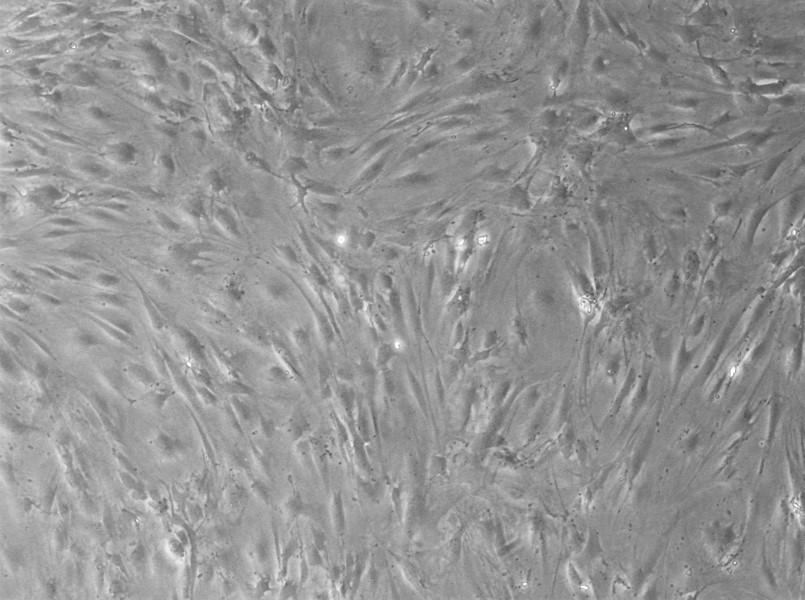爱默生物科技有限公司
厦门市翔安区民安街道莲亭路811号401
(+86) 0592-7080189
support@amogene.com
Product Description
The most abundant cell type in the lung interstitium is the fibroblast. These fibroblasts resemble ordinary fibroblasts, but also possess some distinguishing features, such as long, branching processes and gap junctions. Pulmonary fibroblasts function to produce type III collagen, elastin, and proteoglycans of the extracellular matrix of the alveolar septa. They play an important role in the repair and remodeling processes following tissue damage. The controlled accumulation of fibroblasts to sites of inflammation is crucial to effective tissue repair after injury [1]. An inadequate or an excessive accumulation of fibroblasts can result in abnormal tissue function. For example, excess proliferation of fibroblasts contributes to adventitial thickening observed during the development of hypoxia-induced pulmonary hypertension [2].
iXCells Biotechnologies provides high quality Mouse Pulmonary Fibroblasts (MPF), which are isolated from postnatal day 2 C57BL/6 mouse lung and cryopreserved at P1, with >0.5 million cells in each vial. MPF express fibronectin and are negative for HIV-1, HBV, HCV, mycoplasma, bacteria, yeast, and fungi. They can further expand for 5 population doublings in Fibroblast Growth Medium (Cat# MD-0011) under the condition suggested by iXCells Biotechnologies.

Figure 1. Phase contrast image of primary Mouse Pulmonary Fibroblasts (MPF).
Product Details
|
Tissue |
Postnatal day 2 mouse lung (strain C57BL/6 ) |
|
Package Size |
0.5 million cells/vial |
|
Passage Number |
P1 |
|
Shipped |
Cryopreserved |
|
Storage |
Liquid nitrogen |
|
Growth Properties |
Adherent |
|
Media |
References
[1] Kuwano K, Hagimoto N, Hara N. (2001) “Molecular mechanisms of pulmonary fibrosis and current treatment.” Curr Mol Med. 1: 551-73.
[2] Das M, Dempsey EC, Reeves JT, Stenmark KR. (2002) “Selective expansion of fibroblast subpopulations from pulmonary artery adventitia in response to hypoxia.” Am J Physiol Lung Cell Mol Physiol. 282: L976-86.
[1] Kuwano K, Hagimoto N, Hara N. (2001) “Molecular mechanisms of pulmonary fibrosis and current treatment.” Curr Mol Med. 1: 551-73.
[2] Das M, Dempsey EC, Reeves JT, Stenmark KR. (2002) “Selective expansion of fibroblast subpopulations from pulmonary artery adventitia in response to hypoxia.” Am J Physiol Lung Cell Mol Physiol. 282: L976-86.
| Biological | |
|---|---|
| Cell Type | Fibroblasts |
| Species | Mouse |